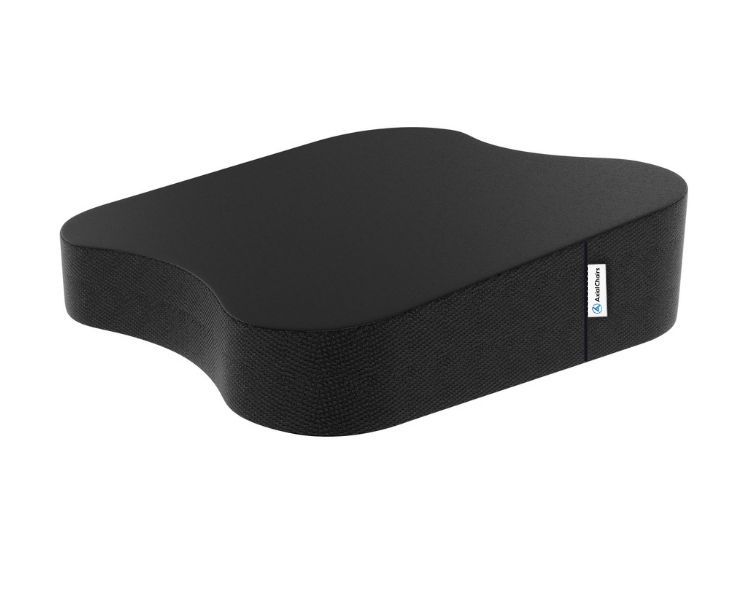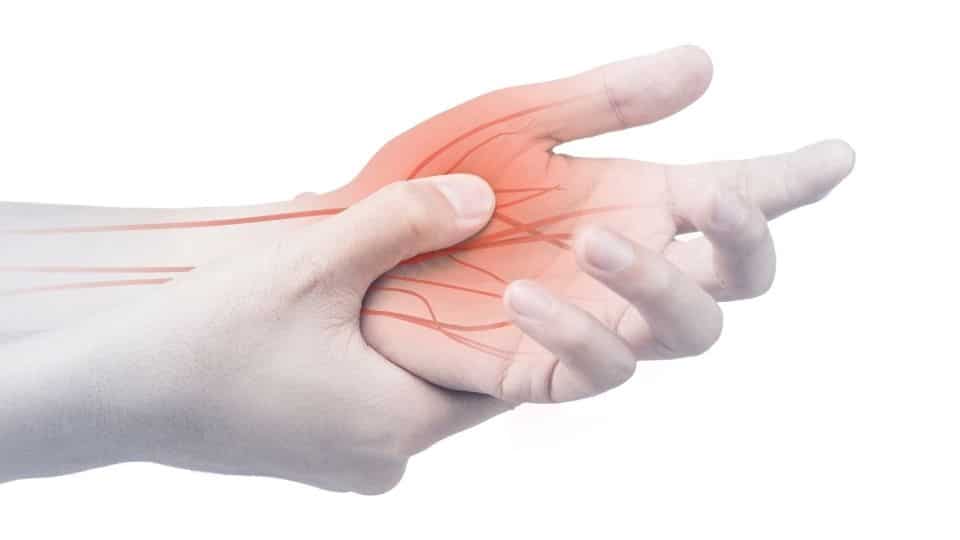It’s no secret that it can be challenging to determine what’s wrong and how to fix it when you’re injured. This is especially true if the injury is in a difficult area to see or reach. So how do you know if you have muscle pain or nerve pain? And more importantly, what can you do about it? Read on for tips on how to tell the difference and how to treat each injury.
As a general rule, both muscle and nerve pain can feel similar. However, muscle pain is usually throbbing or aching, and it worsens with movement. On the other hand, nerve pain is often sharp and shooting, and it may radiate from the point of injury. In addition, nerve pain is often accompanied by tingling, numbness, or weakness.

When you experience pain, it can be challenging to determine the source. Is it a muscle you’ve strained or a nerve that’s been irritated? As an ergonomic consultant with over 30 years of experience, I have helped numerous muscle and nerve, pain patients. I know that it can be challenging to discern between the two types of pain, but there are solutions. If you’re struggling with back pain, I wrote an article on how to manage your pain and why you should do these important steps and I encourage you to read it!
Best Seat Cushion for ComfortAxial Ergonomic Seat Cushion® | Seat Chair Wedge
Quick Guide: A 30-Second Summary

All Day Comfort & Support
Product Name
Axial Designs™ Seat Cushion
Price
$149
Warranty
1 Year
Type
Posture Wedge
Top Layer
100% Natural Latex (Molded)
Bottom Layer
High-Density Foam
Top Material
Isometric Grippy Vegan Leather
Bottom Material
Non-Slip Material
Side Material
3D Breathable Fabric
How Do I Know if My Pain Is Nerve Pain?

Whether it’s a sharp shooting pain or a dull ache, nerve pain can be highly debilitating. Unfortunately, nerve pain is also notoriously difficult to treat, often resisting even the most potent medication. So how do you know if your pain is nerve pain? There are a few key things to look for:
First, does your pain tend to be worse at night? Secondly, does your pain worsen when you move around or apply pressure? Lastly, does your pain feel like it’s coming from deep within your body rather than the surface? If you answered yes to any of these questions, there’s a good chance that you’re dealing with nerve pain.
My Best Tip for Nerve or Muscle Pain
In my professional experience, poor sitting posture is the most common cause of fatigue from sitting. The solution is simple: An adjustable orthopaedic seat wedge for engaging core muscles while adjusting the spine.

I recommend orthopedic seat wedges which can adjust the angle of your upper leg higher than your torso to provide a more comfortable sitting surface. These wedges require sitting upright and come in various sizes to fit most people. They can be used to improve posture and not only for those who experience back pain from sitting.
How Do You Know if You Have a Pulled Muscle or Pinched Nerve?
There are a few key ways to distinguish between a pulled muscle and a pinched nerve. First, consider the location of the pain. A pulled muscle is typically localized, meaning that you’ll feel pain in the specific area where the muscle was injured.

On the other hand, a pinched nerve can cause pain that radiates outward from the point of injury. Secondly, think about the type of pain you’re experiencing. A pulled muscle is usually tender to the touch, while a pinched nerve can cause sharp, shooting pain. Finally, consider your overall level of discomfort. A pulled muscle may cause discomfort and stiffness, but a pinched nerve can be extremely painful. If you’re unsure which one you’re dealing with, it’s always best to see a doctor for a proper diagnosis.
If you think you may have pulled a muscle, you can do a few things to ease the pain and promote healing. First, rest the area as much as possible. This means avoiding any activities that could aggravate the injury, such as strenuous exercise or heavy lifting. You should also apply ice to the area for 20 minutes at a time, several times a day. This hopefully will help reduce inflammation and pain. Finally, stretch gently every day to keep the muscles loose and prevent further injury.
If you think you may have a pinched nerve, it’s essential to see a doctor. In some cases, the nerve can become damaged and may require surgery to repair. However, in most cases, the nerve will eventually h be sure to see a doctor for a proper diagnosis.
How Do I Know if Pain Is Muscular?
When you have pain, it’s crucial to figure out where it’s coming from to know how to treat it. Sometimes pain can be hard to pinpoint, but a few clues can help you determine if your pain is muscular.
One clue is the location of the pain. Suppose you have pain in your muscles, tendons, or ligaments. Another clue is the type of pain. Muscular pain is usually achy and dull rather than sharp or shooting. Additionally, muscular pain is often aggravated by movement and relieved by rest.
All Day Comfort & Support
If you’re not sure whether your pain is muscular, it’s always a good idea to see a doctor for a diagnosis. Once you know the source of your pain, you can start working on treating it. If your pain is muscular, you can do a few things to get relief.
What Does Nerve Pain Feel Like?
Nerve pain is a sharp, shooting pain that can be difficult to describe. It may feel like a hot poker stabbing into your skin or an electric shock running through your body. The pain may come and go quickly, or it may linger for days or weeks at a time.
Sometimes, the pain is so severe that it interferes with your ability to function normally. It may be more of a nuisance, causing a dull ache that is difficult to ignore. Nerve pain can be caused by many factors, including injury, inflammation, and disease. Treatment typically involves medication and lifestyle changes. In some cases, surgery may be necessary to relieve the pressure on the nerves.
How Do You Know if the Pain Is Muscular or Skeletal?
Pain is our body’s way of telling us something is wrong. It can be a sharp shooting pain, a throbbing pain, or a dull ache. It can be localized to one specific area, or it can be felt all over. There are many different causes of pain, but often the pain can be classified as either muscular or skeletal. Muscular pain is usually caused by overuse or injury to the muscles and tendons.
Achy, throbbing, and cramping are common descriptions of this type of pain. Usually, a muscle injury is worse when it is used and gets better with rest. There are several causes of skeletal pain, including problems with bones, joints, or ligaments. There are many ways to describe this type of pain, including sharp, shooting, or stabbing.
Where Is Nerve Pain Felt?
Nerve pain is often felt in specific body areas, depending on which nerves are affected. For example, nerve pain in the arms may be felt as tingling or numbness in the hands and fingers. Nerve pain in the legs may be felt as shooting pain, burning, or tingling down the leg. In some cases, nerve pain can be widespread, affecting large body areas.
This is often seen in conditions like fibromyalgia. Nerve pain can also be felt as a general aching or burning sensation or as prickling or pins and needles. It is often described as being similar to an electrical shock. Nerve pain can vary in intensity from mild to severe. It may come and go, or it may be constant. Nerve pain can be debilitating, making it difficult to carry out everyday activities. Treatment for nerve pain often involves a combination of medication and lifestyle changes. Alternatively, chiropractic care and acupuncture have also been found to help treat nerve pain.
Black Friday: 35% Off Today
Typical Delivery 1-3 Days
FAQs
Symptoms and Differences Between Nerve and Muscle Pain in the Neck?
Muscle pain and nerve, or neuropathic, pain present differently in the neck. Muscle pain often originates from tension, overuse, or injury from physical activity. It can feel like a dull ache or a sharp, severe pain. Nerve pain, however, can be a result of conditions like neuropathy, pinched nerves, or spinal cord injuries. It’s typically described as a burning, shooting, or electric shock-like sensation. The primary difference between muscle pain and nerve pain is their nature and the kind of discomfort they produce.
How to Identify the Symptoms: Experiencing Total Body Muscle and Nerve Pain?
Muscle and nerve pain can sometimes occur throughout the body, leading to chronic pain. Muscle pain usually feels localized and improves with rest. However, nerve pain may not have a definite location and can persist despite rest. These symptoms can be challenging to deal with, which is why proper diagnosis and treatment are crucial. Understanding what is causing your pain can help determine the best treatment options.
The Connection Between Tight Muscles and Nerve Pain in the Leg: Is there a Need for Physical Therapy?
Muscle tightness can compress nerves in the leg, leading to nerve pain. This is often seen with conditions like piriformis syndrome, where the piriformis muscle in the buttocks tightens and irritates the sciatic nerve. Physical therapy can be instrumental in relieving tight muscles and consequently reducing nerve pain. Exercises can help stretch and strengthen muscles, preventing them from pulling or pinching nerves.
Understanding the Symptoms and Treatment of Muscle and Nerve Pain in Legs
The symptoms of muscle and nerve pain in the legs can vary. Muscle pain is often described as a cramping or stabbing pain, while nerve pain can feel like burning, tingling, or numbness. Treatments can range from conservative options like physical therapy, general medicine, and regenerative medicine to more invasive treatments like steroid injection or spine surgery. Chronic cases of pain caused by muscle tension or nerve damage may need a multidisciplinary approach to manage effectively.
Sciatic Nerve Pain versus Muscle Pain: Steroid Injection or Spine Surgery?
Sciatic nerve pain and muscle pain can both cause discomfort in the lower back and legs, but the cause and treatment can vary significantly. Sciatic pain, often due to a pinched nerve in the lower spine, can cause sharp, radiating pain down the leg. In contrast, muscle pain may be due to pulled muscles or overuse, often felt as a dull, localized pain. Treatments can range from conservative options like physical therapy to more invasive procedures. Steroid injection can help reduce inflammation and pain in both conditions, while spine surgery is generally reserved for severe cases of sciatic nerve pain that do not respond to other treatments. Understanding the cause of your pain is vital in choosing the right treatment.
Summary:
The most important thing to remember is that if the pain doesn’t go away or seems to be getting worse, you should seek medical help. And as always, if you have any questions or concerns, don’t hesitate to ask your doctor or physical therapist. Now that you know how to tell the difference between muscle pain and nerve pain, you can start treating the injury and hopefully get back to feeling like yourself again in no time.
Sources:
- Mense, S., Simons, D.G. and Russell, I.J., 2001. Muscle pain: understanding its nature, diagnosis, and treatment. Lippincott Williams & Wilkins.
- Arendt-Nielsen, L. and Svensson, P., 2001. Referred muscle pain: basic and clinical findings. The Clinical journal of pain, 17(1), pp.11-19.
- Mense, S., 2003. The pathogenesis of muscle pain. Current pain and headache reports, 7(6), pp.419-425.
- Jensen, T.S., Gottrup, H., Sindrup, S.H. and Bach, F.W., 2001. The clinical picture of neuropathic pain. European journal of pharmacology, 429(1-3), pp.1-11.
- Baron, R. and Tölle, T.R., 2008. Assessment and diagnosis of neuropathic pain. Current opinion in supportive and palliative care, 2(1), pp.1-8.










